The outcome of the American Revolution may have been affected by catastrophic storms in the deadliest hurricane season in recorded history.
-
September 2020
Volume65Issue5
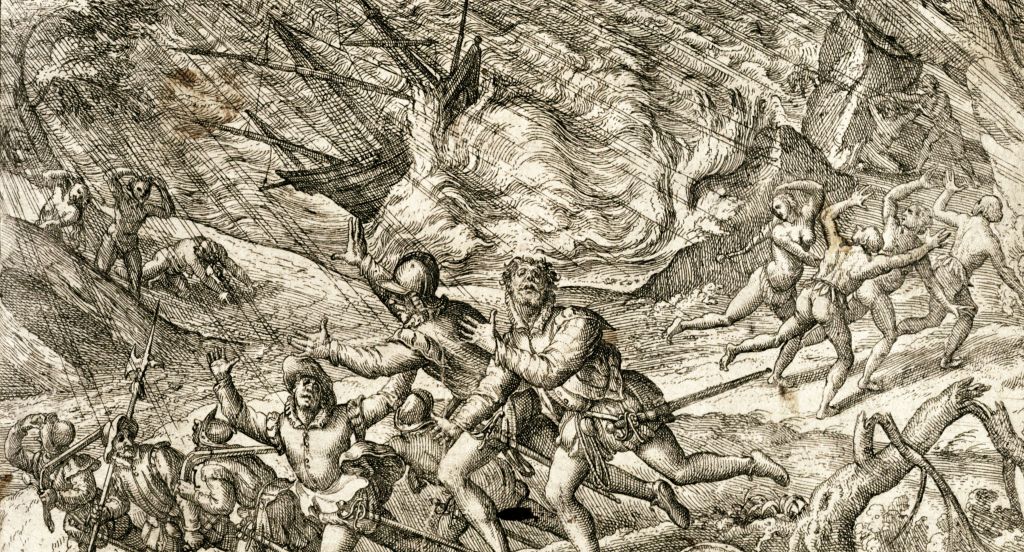
Editor's Note: Weather affects so much in our own lives, yet too few historians consider its impact on major events in the past. This month, Eric Jay Dolin, a writer with degrees in environmental science and environmental policy from Brown, Yale, and MIT, has published A Furious Sky: The Five-Hundred-Year History of America's Hurricanes (Liveright), a fascinating look at how these monstrous storms have affected history. We asked him to tell us about the worst hurricane season, and how it changed American history. Mr Dolin has written 13 previous books of history including Leviathan and a favorite of ours, Fur, Fortune, and Empire, how the fur trade affected European settlement of North America and the development of the United States.
Hurricanes are — and have always been — an inevitable and painful part of the American experience. Just as we can count on the sun rising and setting each day, so, too, can we expect hurricanes to periodically visit our shores, rampaging like brawlers, bobbing and weaving and slugging anyone or anything that stands in their way.
Over the centuries, hurricanes have left an indelible mark on American history. And none was greater than the catastrophic hurricane season of 1780 — the deadliest on record according to the National Hurricane Center — which had a profound effect on both the French and British militaries and their attitudes towards fighting in the Americas. Numerous French transports and fifteen British warships were lost, many with their entire crews perishing, in the months before the pivotal naval battles that led to the capture of Gen. Cornwallis’s army at Yorktown.
See the results of American Heritage's new research in
“British Ships Lost in 1780 Hurricanes” in this issue.
The word “hurricane” has its origins in the original languages of the Caribbean basin, where native peoples attributed the region’s wild weather to the work of deities. The Mayans named their god of storms or destruction hunraken, and the Quiche and the Arawak called theirs hurakan, while the Taino named theirs juracan. Over the centuries of European colonization, these names ultimately morphed into huracan, ouragan, orkaan, orkanen, and hurricane, in Spanish, French, Dutch, Danish, and English, respectively.
Columbus survived a hurricane during his last voyage to the New World in 1502, one which sunk 24 Spanish treasure ships returning to Spain with the loss of nearly everyone on board. In 1559 Spain launched the first European effort to settle North America with a fleet of eleven ships sent to Pensacola Bay with 1,000 colonists and 500 soldiers. But in mid-August, a hurricane delivered a knockout blow.
“During the night,” wrote expedition leader Don Tristan de Luna, “there came up from the north a fierce tempest, which, blowing for twenty-four hours from all directions . . . without stopping but increasing continuously, did irreparable damage to the ships of the fleet.” Most of the ships sank or broke apart, ruining food supplies and bringing an end to the settlement effort.
See also: “Shipwrecked History: Spanish Ships Found in Pensacola Harbor,” by John Worth
The first hurricane of the terrible 1780 season struck at the beginning of October and laid waste to Jamaica by flattening buildings, sinking ships, and killing more than a thousand people. Jamaican governor John Dalling described the scene in Savanna-la-Mar, at the southwestern tip of the island, when the hurricane roared ashore: “The sea broke suddenly in upon the town, and in its retreat swept everything away with it, so as not to leave the smallest vestige of man, beast, or house behind.”
A former plantation owner on Jamaica remarked that the hurricane “will be ever acknowledged as a visitation that descends but once in a century, and that serves as a scourge to correct the vanity, to humble the pride, and to chastise the imprudence and arrogance of men.”
As the storm transited Jamaica and then swept over Cuba, it destroyed seven Royal Navy ships, sinking the 64-gun HMS Stirling Castle, 44-gun HMS Phoenix, and five others, and killing most of their crews. The terrifying ordeal of Phoenix was captured in a letter that one of its survivors, 1st Lt. Benjamin Archer, wrote to his mother.
The Phoenix encountered the storm while sailing between Jamaica and Cuba. As the winds rose to hurricane strength, the sailors secured the sails, tied down the guns, and made the ship as snug as possible. In the midst of these preparations, Archer noticed birds literally dropping out of the sky and diving toward the deck, where many of them were knocked unconscious. Upon reviving, they would not leave their haven in the storm, but rather huddled in corners, trying to shield themselves from the wind. The elements brought so much pressure to bear on the hull that all the ship’s seams began to leak. Archer had been through rough weather before, but nothing like this. “My God! To think that the wind could have such force!” he wrote.
Pumping furiously to keep the lower decks from swamping, the sailors worked nonstop through the night, but the hurricane was gaining. Archer lashed himself to a post on the deck, barking out orders as best he could above the deafening din. “If l was to write forever, I could not give you an idea of’ the storm, his letter said – “a total darkness all above, the sea on fire, running as it were the Alps, or pikes of Tenerife; mountains are too common an idea; the wind rising louder than thunder ... the poor ship very much pressed, yet doing what she could, shaking her sides and groaning at every stroke.”
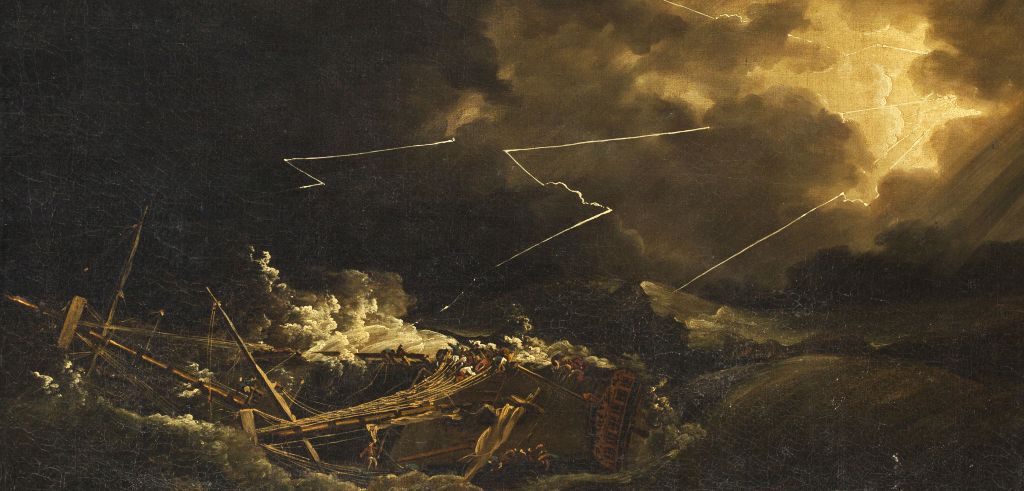
Ultimately, the Phoenix plowed into the shore, stern first, about 10 miles east of Cuba’s Cape Cruz. The waves forced her so high onto the rocks that she hardly moved from that spot. When the fury of the hurricane had passed, the ship was a total loss, yet it was still mostly in one piece. Only five men had been killed, when they were washed overboard by a breaking wave. Taking in the scene, with many injured men lying about, Archer “was surprised to find [that] the most swaggering, swearing bullies in fine weather, were now the most pitiful wretches on earth, when death appeared before them.”
As the storm slowly subsided, the officers and crew of the Phoenix clambered higher up on the shore, away from the pounding surf. In the coming days, Archer and four other men sailed the ship’s cutter to Montego Bay, where they enlisted three serviceable vessels to ferry the Phoenix’s remaining crew back to Jamaica. Meanwhile, after leaving Cuba behind, the hurricane continued its northward march. It greatly damaged two separate British naval fleets, forcing many of the ships into port for repairs.
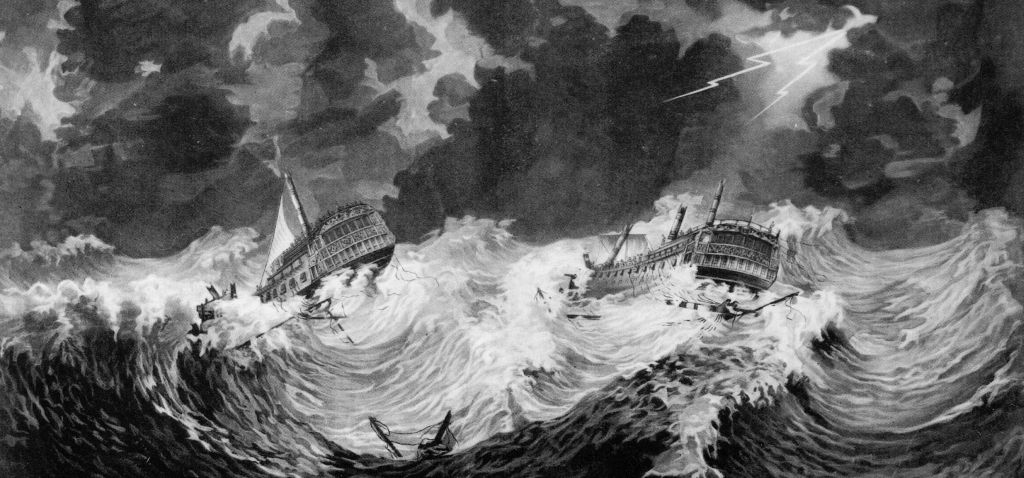
A week later the Caribbean would be hit by a storm of such magnitude that it came to be known as the Great Hurricane of 1780. Its trajectory took it past the Leeward Islands and between Puerto Rico and Hispaniola. It then curved sharply to the east, dying out over the midAtlantic after delivering Bermuda a serious blow. But it had its most devastating impact on Barbados, Martinique, and St. Eustatius, with estimates of the deaths on these islands alone totaling roughly 17,000.
British admiral Lord George Bridges Rodney, commander in chief of the Leeward Islands Station, was on a ship off the coast of New York at the time when the hurricane hit, but when he returned to Barbados a few weeks later, he wrote a letter in which he expressed his shock and dismay at the vista that unfolded before him. “It is impossible to describe the dreadful scene [the hurricane] has occasioned at Barbados, and the condition of the miserable inhabitants .... The whole face of the country appears one entire ruin; and the most beautiful island in the world has the appearance of a country laid waste by fire and sword, and appears to the imagination more dreadful than it is possible for me to find words to express.”
The Great Hurricane of 1780 damaged both the British and French navies, which used Caribbean ports as staging areas for their forces fighting in the American Revolution. But the British suffered worse, with 15 warships sunk or severely damaged. At Martinique, HMS Andromeda, HMS Edymion, and HMS Laurel were all destroyed and their crews mostly drowned. At St. Lucia five more Royal Navy warships were lost. The French had some than forty transport vessels sunk or damaged, along with thousands of soldiers lost, but didn’t suffer the loss of ships of war like the British.
The overall death toll of the hurricane is estimated to have reached 22,000, with some sources placing it higher still. In either case, this staggering loss of life earned this storm the title of the deadliest hurricane ever in the Atlantic.
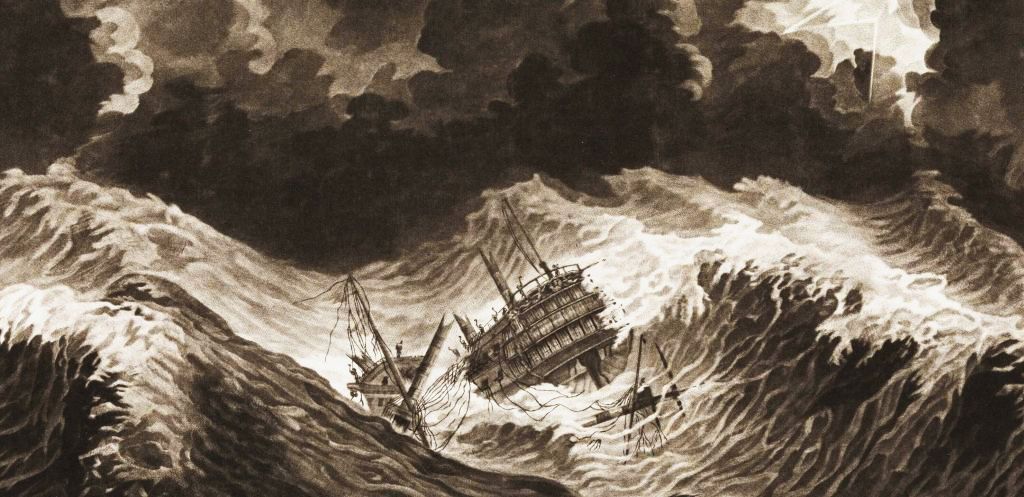
There was yet another massive hurricane that hit the Caribbean in October 1780, called Solano’s Hurricane, which struck a few days after the Great Hurricane of 1780. Although it gravely damaged the Spanish fleet under the command of Admiral Don Jose Solano y Bote Carrasco y Diaz, it did not impact the English or French fleets, and therefore did not have a direct impact on the American Revolution.
The hurricanes that slammed the Caribbean in 1780 raise the question of whether these terrible weather events affected the course of the Revolutionary War. According to historian Nathaniel Philbrick, they had a decisive impact because they caused France, America’s ally in the war, to reevaluate its stance vis-a-vis sending ships north to fight the British. “The lesson impossible to ignore,” Philbrick argues. The French concluded that remaining in the Caribbean during hurricane season was too dangerous. “Up until this point, France had viewed a naval expedition to the north on the behalf of the United States a possibility but hardly a priority. After that horrendous October, a different attitude prevailed.”
Given their newfound appreciation for the destructive power of hurricanes, the French spent the winter of early 1781 in the Caribbean repairing their ships and strengthening their hold on the French colonies there. Then they sent most of their forces north to the American colonies, both to avoid tangling with any more hurricanes and also to aid the Americans.
And the Americans needed help. Even ardent patriots were tired of war, inflation, and reduced trade after six years. The number of soldiers in George Washington’s army was down to 3,500, many of whom had not been paid in nearly a year and were on the verge of desertion or even mutiny. The British had held New York for five years, and their southern army was decimating Virginia. “Our affairs are in a most wretched situation,” summed up a Congressman from Maryland.
In the three years since France had entered the war on the side of the Americans, the French Navy had only a limited impact. But in the spring of 1781, a fleet of French warships under the Comte de Grasse sailed from Brest to the Caribbean, added some additional ships of the line there, and headed to the Chesapeake, where they faced less of a threat from summer hurricanes.
At the same time, the French fleet in Newport under Admiral de Barras sailed to join them in Virginia, and Gen. Rochambeau and his French army joined forces with Washington and his Continentals to march south. But the allied forces would need control of the Chesapeake Bay to bottle up Gen. Cornwallis at his new base at Yorktown, to prevent the Royal Navy from resupplying or evacuating the army.
The British learned of the allies move south, and Rear Admiral Sir Thomas Graves sailed his fleet from New York down the coast. His progress was slow because some of the ships that had been in the West Indies were in poor condition and needed repairs en route. On September 5 they found and engaged the Comte de Grasse’s French fleet at the mouth of the Chesapeake Bay.
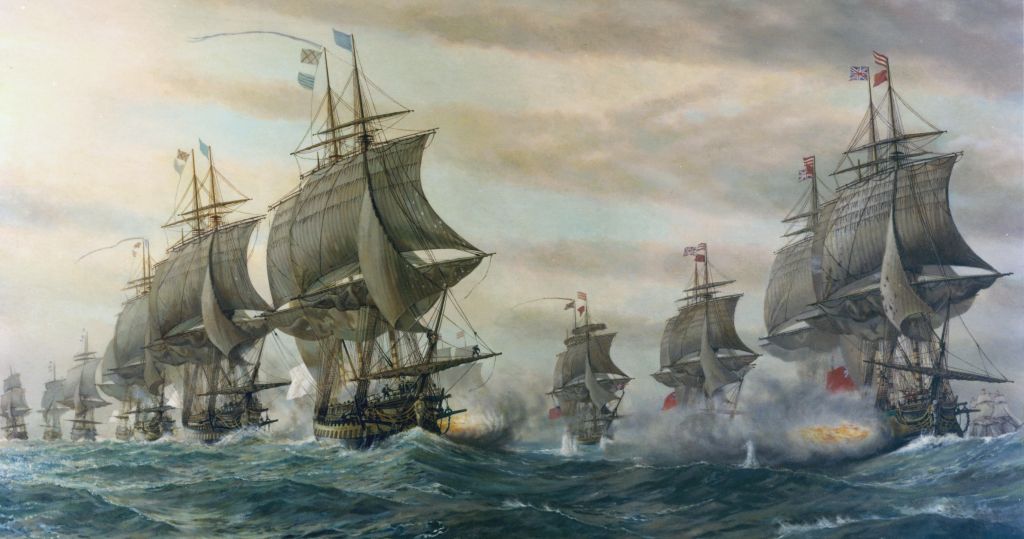
The French enjoyed numerical superiority with 24 ships of line and 2 frigates opposing the British 19 ships. After hours of maneuvering the fleets fired broadsides for two hours, with the British sustaining greater damage. Eventually, Graves ordered the British fleet to disengage and sail back to New York, leaving the French firmly in charge of the Chesapeake.
See also: "A Near Thing at Yorktown," by Harold A Larrabee
Could the Royal Navy’s recent loss of 15 warships to hurricanes — including 74-gun and 64-gun ships of the line — have affected the balance of the crucial battle? It seems likely. In any case, the French victory at the crucial Battle of the Chesapeake let to the ultimate American victory over the British in the Battle of Yorktown, which ended when Lord Charles Cornwallis surrendered to George Washington at Yorktown on October 19, 1781 — an event so profound that when the British prime minister, the imperious Lord North, learned of the surrender he wailed, “Oh God, it is all over!” He was correct.
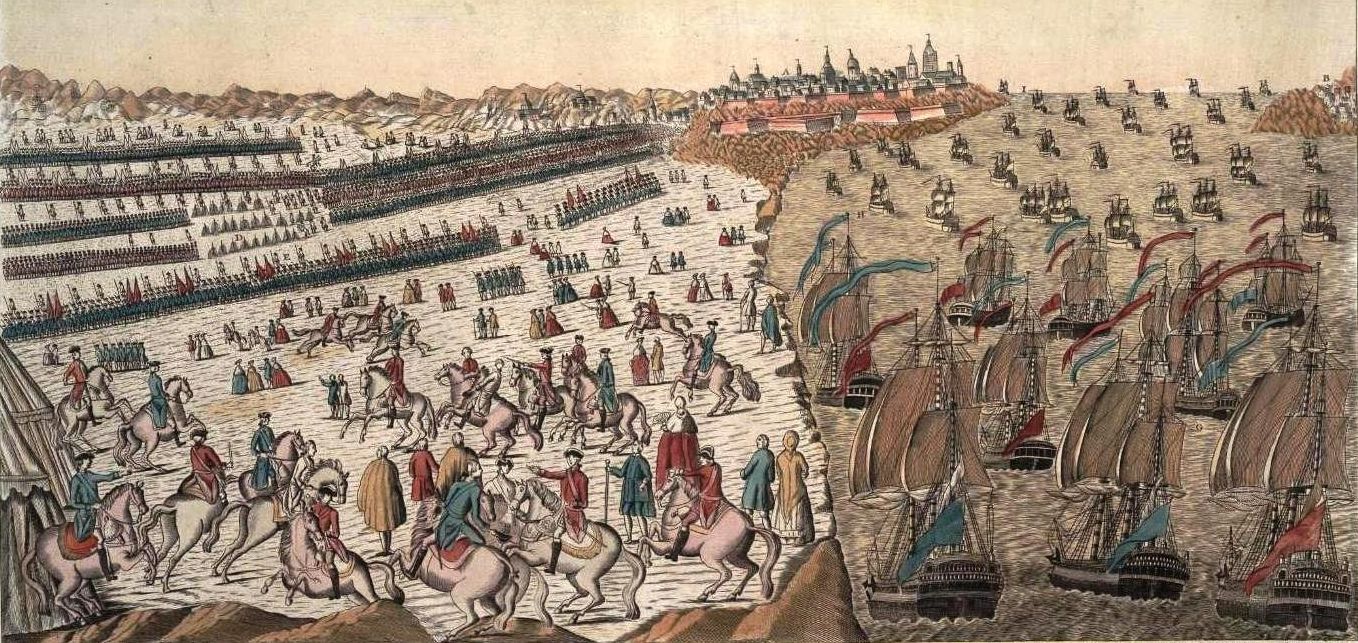
The surrender effectively ended the war and soon led to peace negotiations, resulting in the Treaty of Paris on September 3, 1783 and a newly independent nation.

